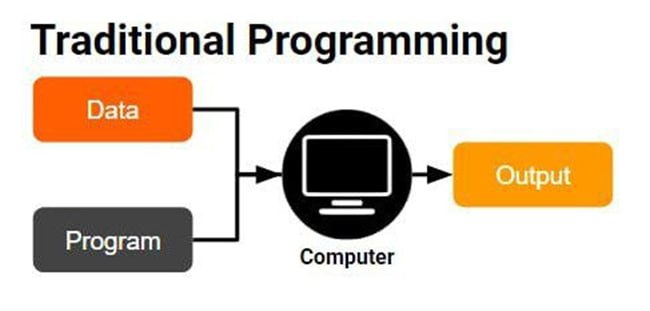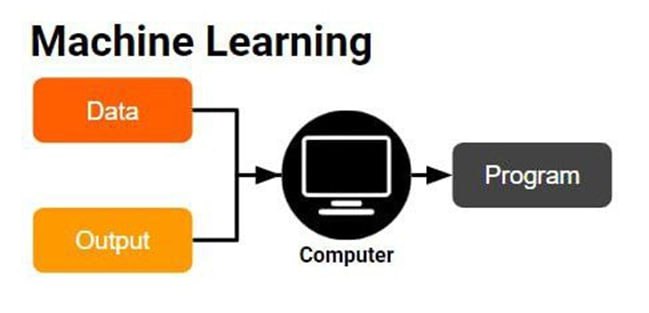AI V.S Traditional Programming
Today, we are going to answer a question we hear a lot, "What is the difference between AI and traditional programming?"".
Obviously, both involve writing code, but the way in which they solve problems is quite different.
First of all, in traditional programming, we are writing codes that follow a set of predefined rules and instructions to solve specific problems.
The easiest way to understand this is that we write the instructions of how to solve the problem, and then we give the computer the input, and it returns the output.
For example, a traditional program might be designed to perform a calculation based on user input or to sort a list of items in a particular way.

On the other hand, AI involves writing code that defines a mathematical model.
AI models are designed to solve the problems that require a human intelligence to solve it,
and they use a variety of techniques for analyzing data and making decisions based on patterns and correlations.
So if we want to solve a problem using AI all we have to do is give the computer an input with an output
and then we will have a model (like a function to solve the problem without knowing the instructions).
An AI model might be designed to recognize images, translate languages, or even play complex games like chess.

One of the key differences between AI and traditional programming is the level of human involvement required.
Traditional programs typically require a programmer to write the code.
In contrast, AI models are designed to learn and improve over time,
so they require less human intervention once they are set up and running.
Another difference is the type of data that each approach works with. Traditional programs typically work with structured data, which is data that is organized in a fixed format like a database or spreadsheet. AI models, on the other hand, can work with both structured and unstructured data, such as text, images, and video.
Understanding these differences can help developers choose the right approach for their particular problem or application, but how to choose the best approach?
Choosing between traditional programming and AI for a given problem requires careful consideration of the nature of the problem and the available data. Here are some factors that developers should take into account:
- Problem complexity: Traditional programming is best suited for problems that are well-defined and can be solved using a fixed set of rules and instructions. AI, on the other hand, is better suited for complex problems that require the ability to learn from data and make decisions based on patterns and correlations.
- Data availability: AI requires data to train the algorithms that power the system. If the required data is not available or is difficult to obtain, traditional programming may be a better choice.
- Data type: As mentioned earlier, traditional programming works best with structured data, while AI can work with both structured and unstructured data. If the problem involves unstructured data such as images or text, AI may be the better choice.
But we also have to keep in mind that while AI is a powerful tool for solving complex problems, there are certain situations where it may not be the most appropriate choice. Here are some examples of situations where AI may not be the best option:
- Lack of data: As mentioned earlier, AI requires large amounts of data to train the algorithms that power the system. If the required data is not available or is difficult to obtain, AI may not be the best choice.
- Clear set of rules: If the problem can be solved using a clear set of rules and instructions, traditional programming may be a more efficient and practical option. For example, if the problem involves performing a basic arithmetic calculation, there is no need to use AI.
- Complexity: While AI is well-suited for solving complex problems, there are some problems that may be too complex for AI to handle. For example, if the problem requires a high degree of human intuition or judgment, AI may not be able to provide an accurate solution.
- Privacy concerns: AI systems often require access to sensitive data, such as personal information or financial data. If there are concerns about data privacy or security, AI may not be the most appropriate choice.
- Ethical Considerations: AI may not be appropriate for situations where ethical considerations are involved, such as in social decision-making processes or moral dilemmas.
In summary, choosing between traditional programming and AI for a given problem requires careful consideration of the nature of the problem, the available data, the required expertise, and the available time and resources. By taking these factors into account, developers can make an informed decision about which approach to use to solve the problem at hand.
